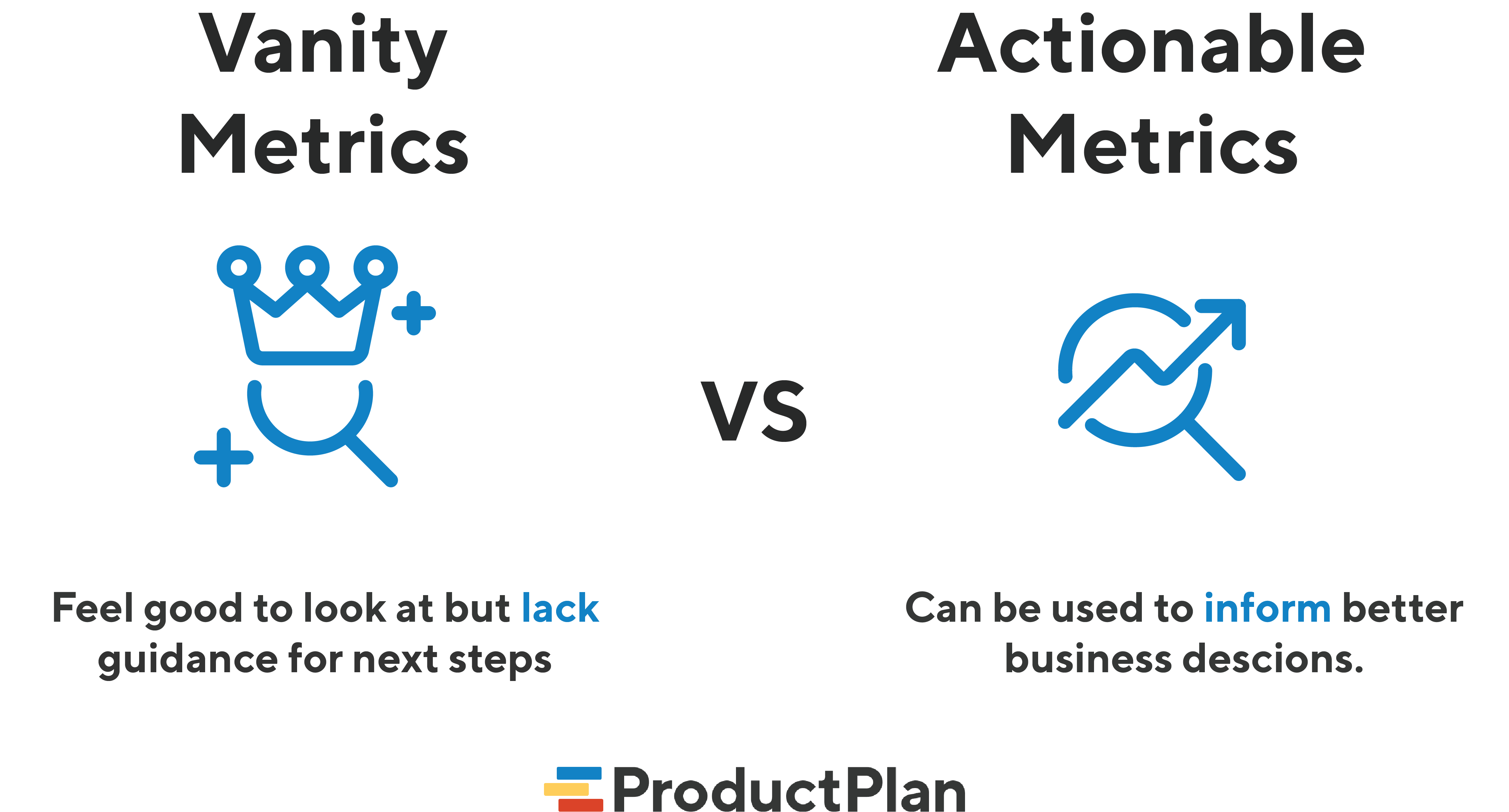What Are Vanity Metrics?
Vanity metrics are statistics that look spectacular on the surface but don’t necessarily translate to any meaningful business results. Examples include the number of social media followers or the number of views on a promotional video. While the data might seem superficially impressive, these metrics do not accurately reflect an organization’s key drivers (e.g., active users, engagement, the cost of acquiring new customers, etc.) and provide very little insight into how a product or initiative relates to broader business objectives.
How to Identify Vanity Metrics
Without proper context or showing how a metric relates to overall business goals, product teams can easily fall into a vanity metric trap. And it’s easy to see why: They make you feel good, but they don’t necessarily matter to your product’s success. That’s why Eric Ries, author of The Lean Startup, calls them dangerous.
Here are a few telltale signs that you’re measuring a vanity metric:
- It lacks substance.
- It’s overly simplistic to measure.
- It skips nuance and context.
- It’s often misleading.
- It doesn’t help you improve your product or business in any meaningful way.
Context is key. Without it, there’s little real value to the metric. Metrics that can easily fall into this category include:
- Raw pageviews
- Running total of customers
- Running totals of purchases or downloads
- Social media followers
- Number of new users gained per day
- Registered users
- Downloads
Vanity Metrics vs. Actionable Metrics
Whether a metric is labeled, vanity or actionable depends on the organization and its unique business goals.
Tableau, the visual analytics platform, sums it up like this:
“Vanity metrics are metrics that make you look good to others but do not help you understand your performance in a way that informs future strategies. These metrics are exciting to point to if you want to appear to be improving, but they often aren’t actionable and aren’t related to anything you can control or repeat in a meaningful way.”
A vanity metric is superficial, poorly understood, and often results in a team resting on its laurels rather than digging into the data for guidance on how to improve the product. This type of measurement can seductively woo organizations off course.
An actionable metric is a clearly defined measurement that delivers valuable insights related to business objectives. This data helps teams make informed decisions about the direction of a product or organization.

While vanity metrics tend to lack substance, actionable metrics lead to making better business decisions because they provide meaningful, actionable guidance about what to do with the data.
Word to the wise: Actionable metrics should also be accessible and auditable. Aim for quality over quantity by focusing on the right data. And only measure what you truly need so you don’t get lost in irrelevant data.
3 Tips for Getting Actionable Metrics
When considering a metric, determine first if it will help you achieve meaningful business results by answering these questions:
1. What’s the business decision you can make with the metric?
2. How can you intentionally reproduce the result?
3. Is the data a real reflection of the truth?
Of course, before you tackle these questions, you need to have a clear idea of your organization’s goals.
Product teams that focus on metrics that really matter are well on their way to achieving product excellence.
Learn how PMs use metrics to build better products.
Related terms: A/B Test, Objectives and Key Results, Lifetime Value, Customer Acquisition Cost, Usability Testing, Product Ops.